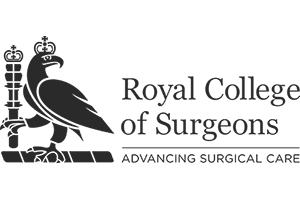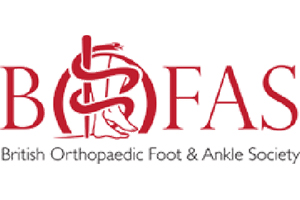Arthroscopy is an operation on a joint which is done by a “keyhole” technique. An instrument which contains a video camera is inserted into the joint to allow examination of the inside. By using specially designed probes and instruments, the surgeon can also do some treatments to the inside of the joint.
Why would it be done?
Arthroscopy of the ankle is usually done after an injury which is failing to settle and where there is evidence of damage to the ligaments, lining or surfaces of the ankle. It is also a good way to remove loose fragments from the inside of the ankle. Sometimes it is done to assess the severity or extent of arthritis, or to treat arthritis by fusing the joint. If it is done for an injury, a scan of the ankle may be done first to alert the surgeon to what may be found inside the joint.
What does it involve?
The ankle is first examined carefully with the leg relaxed. Special X-rays may be taken. Traction is applied to the ankle by a strap applied around the heel.
Fluid is injected into the ankle. Cuts are then made at the front of the ankle, one at each side. Occasionally another cut is required at the back of the ankle. Each cut is about 1cm long. Through these cuts, a camera and instruments are inserted into the ankle. The whole of the inside of the ankle is examined and any necessary treatment carried out. The ankle is then washed out and the cuts stitched with a single stitch each.
Can it be done as a day case operation?
If you are medically fit, have someone who can collect you and look after you after the operation, and you are comfortable afterwards, the operation can be done on a day case basis. However, if you have other medical problems such as diabetes, asthma or high blood pressure, you may have to be admitted the day before for tests and stay overnight after surgery. If you cannot be collected and looked after you must stay overnight to avoid complications.
Most ankle arthroscopies are done as day case operations.
Will I have to go to sleep (general anaesthetic)?
The operation will usually be done under general anaesthetic (asleep) but occasionally can be done under spinal anaesthetic. Your anaesthetist will advise you about the best choice of anaesthetic for you.
In addition, local anaesthetic may be injected into your ankle while you are asleep to reduce the pain after the operation even if you go to sleep for the surgery. You will also be given pain-killing tablets as required.
What will it be like afterwards?
There will be a bulky dressing round your ankle. When you have recovered from your anaesthetic, you can get up, walking freely on your ankle.
You can remove the dressing 1-2 days after the operation and start exercising your ankle, using both up-and-down and side-to-side movements (you will be given advice on this before leaving hospital). The ankle will still be fairly swollen, bruised and stiff at this stage, so you should keep it up when not walking or exercising. If it gets very swollen, you can put some ice on it for 10-15 minutes.
You will be seen in the outpatient clinic after your operation. Your ankle will be examined. The findings of your arthroscopy will be discussed with you, and any further treatment that is necessary will be arranged. Physiotherapy is often prescribed at this stage, but many people do not need it and can exercise on their own. If no further treatment is required and your ankle is healing well, you may be discharged from further follow-up at this appointment, or a further check-up may be arranged.
The stitches will need to be removed at 10 -14 days after your operation.
Will I have a plaster on afterwards?
No plaster is required. We want you to start exercising your ankle as soon as possible.
How soon can I….
Walk on the ankle?
You can walk on the ankle immediately you have recovered from your anaesthetic. It may be quite sore for a few days and some people need crutches to take some of the weight off their ankle. Almost everyone can walk fully weight-bearing on the ankle within a week.
Go back to work?
If you are comfortable and your work is not too demanding, you could go back to work within a week. However, if you have a heavy manual job, or have had extensive surgery within the ankle, you may not be able to go back for a month.
Drive?
If you have an automatic car and are comfortable, you could drive within a couple of days of the operation. Otherwise you can drive about 1-2 weeks after surgery, depending mainly on your comfort.
Play sport?
As you recover from your operation, you can gradually increase your activity, determined by comfort and the amount of swelling and flexibility in the ankle. Start with walking and cycling, then light running. Make sure your foot and ankle are fairly flexible before moving to twisting or impact activities, and make sure you can turn and jump comfortably before returning to contact sports.
Your return to sport will also depend on the damage to your ankle which caused you to have surgery in the first place, and on any other necessary treatment. As this operation tends to be done for problems following an injury, this is an important factor in recovery for many people.
All other things being equal, most people will get back to their previous level of activity in 2-3 months.
What can go wrong?
The commonest problem after an ankle arthroscopy is numbness over the top of the foot or outer toes. This is because the cuts are made close to the nerves to these areas, and the nerves have to be pushed aside to get access to the joint. Although this is done very carefully, sometimes this stretches the nerves and they stop working. Usually this numbness recovers within 2 months, but a few people have small areas of permanent numbness.
The cuts usually heal up quite quickly, but a few discharge some fluid and take 2-3 weeks to heal. Usually dressing the wounds carefully is all that is required to get them to heal; sometimes antibiotics are needed too.
All keyhole surgical techniques involve delicate work with fine instruments very close to the surface of the joint. Occasionally some damage is done to the surface of the joint, although this is rarely any trouble to the patient. Very rarely an instrument breaks in the joint. Usually it can be retrieved through the “keyhole” incisions, but sometimes the joint has to be fully opened up.





